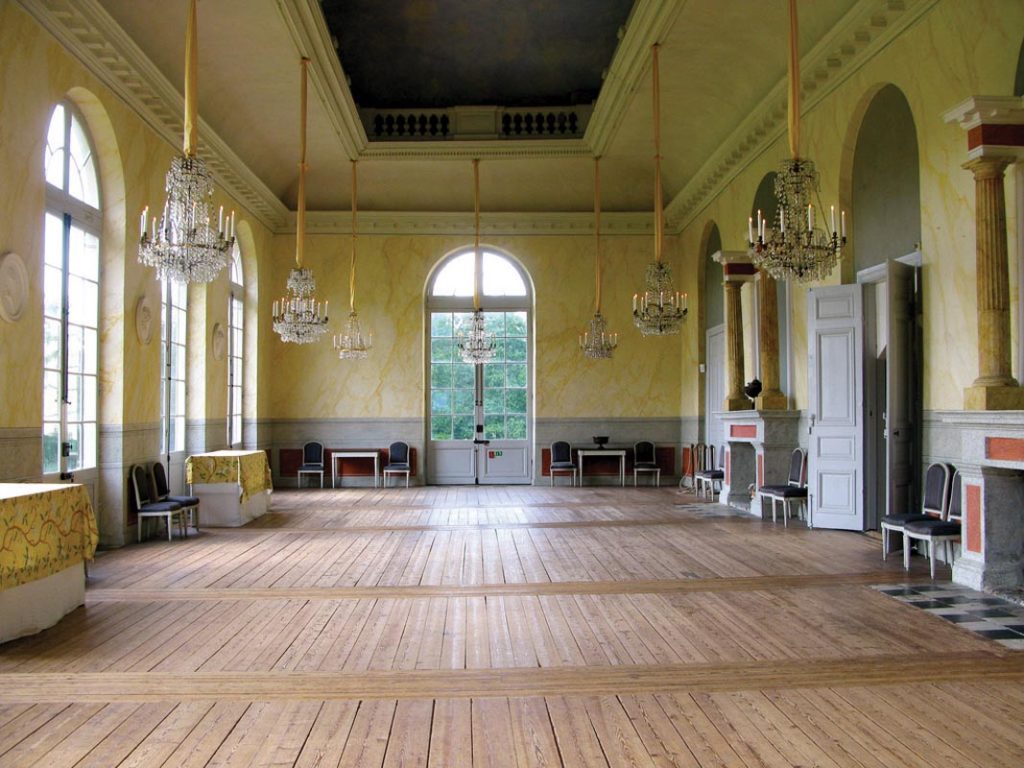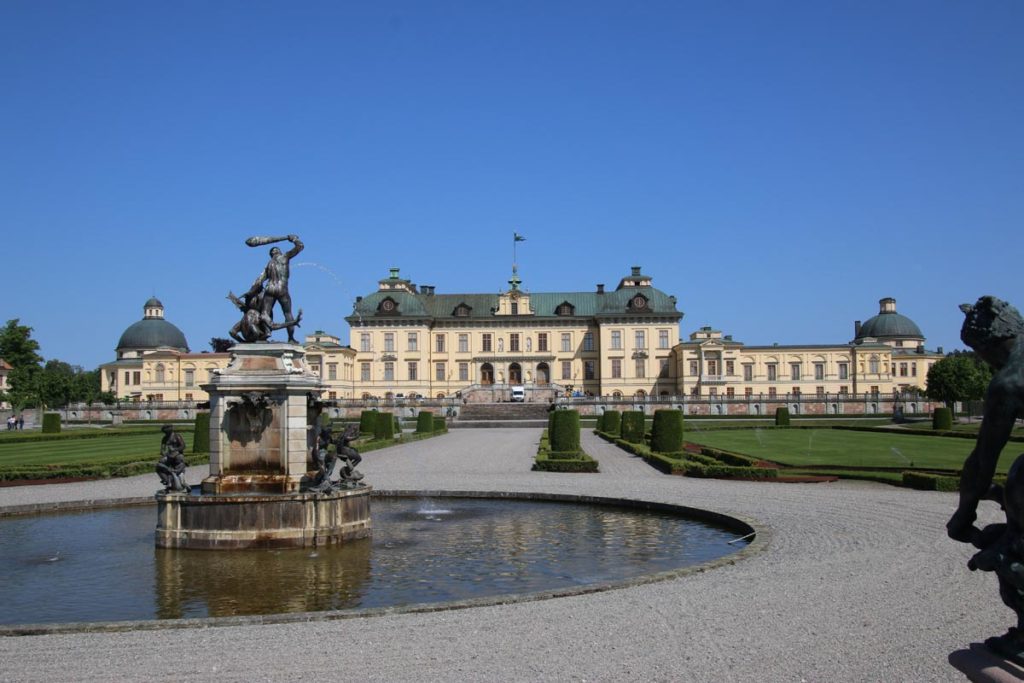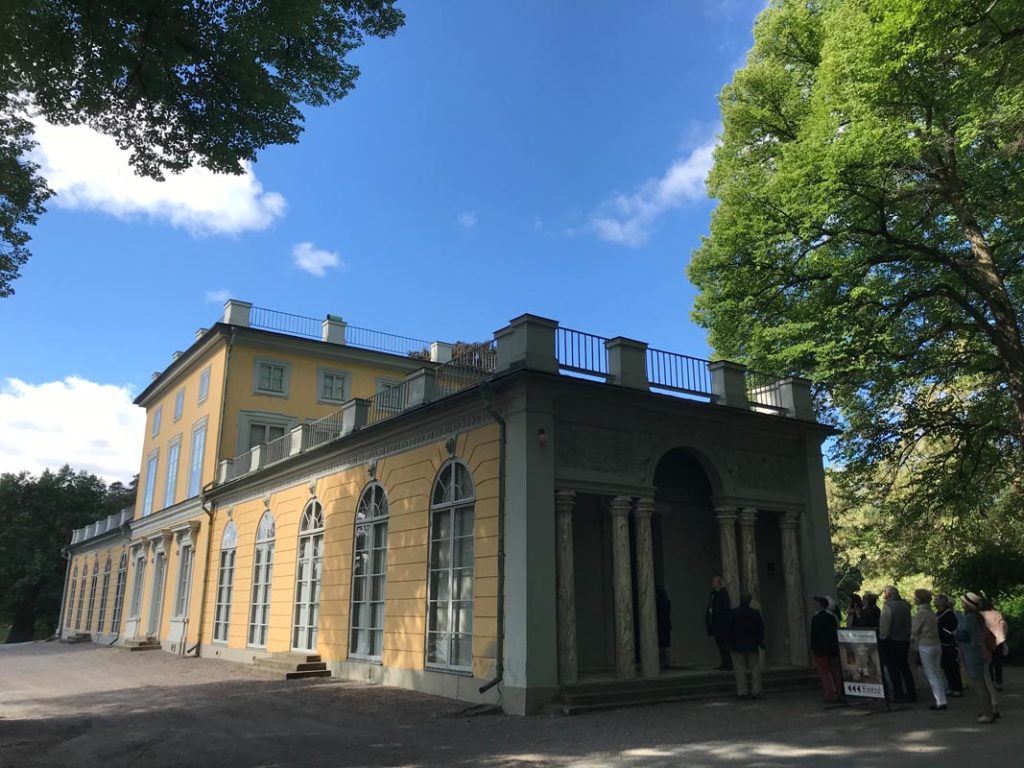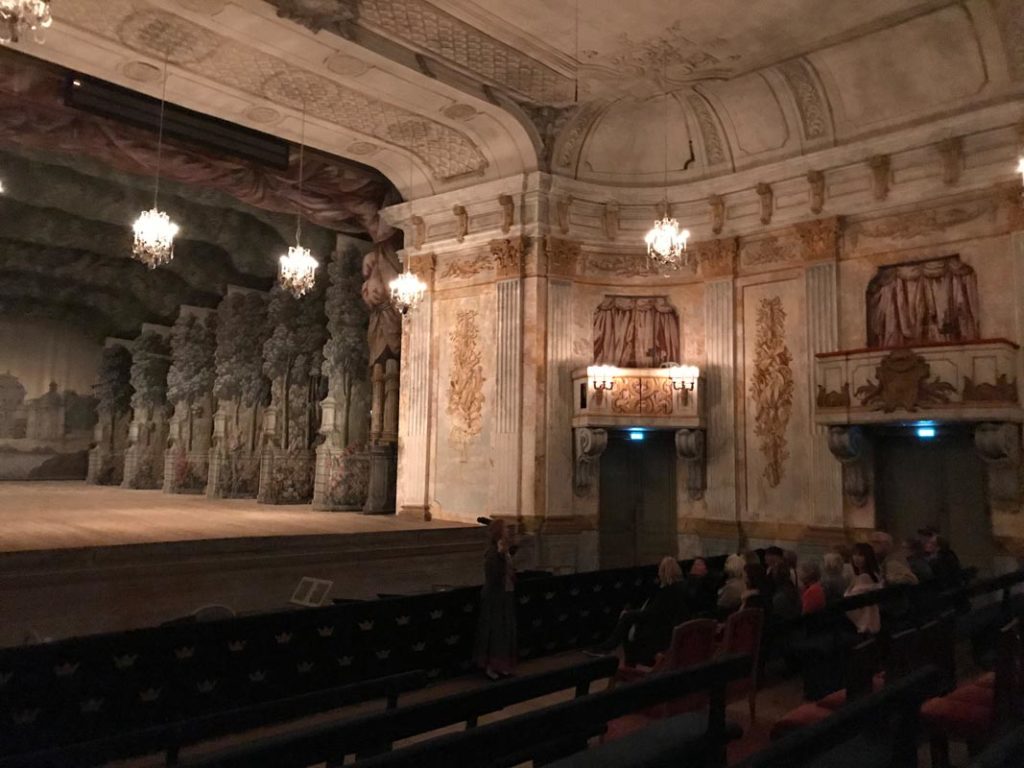Sweden’s Culture King
EVENTS > STUDY TRIPS ABROAD
STUDY TRIP ABROAD FALL 2018 IN REVIEW
by Trevor Brandt, Curator,
American Swedish Historical Museum
Members of the Decorative Arts Trust encountered dozens of figures from Scandinavian history during the Spring Study Trip Abroad to Sweden and Denmark. Whether exploring estates scattered around the Stockholm archipelago or the lakeside retreat of Danish royals, participants learned that the stories of Northern Europe are inextricably bound to fascinating people. The figure uniting so many of the late 18th-century Swedish sites, and indeed deeply ingrained in the development of Neoclassicism in the region, is King Gustav III.
Carl Gustav III ruled Sweden from 1772 until his assassination in 1792. An enlightened despot and cousin of both Frederick II of Prussia and Catharine the Great of Russia, Gustav III encouraged one of Sweden’s most culturally expansive periods. An explosion of French and Italian Neoclassicism spread throughout the nation via his inner circle of French-born designers such as Louis Masraliez and Louis Jean Desprez. Simultaneously, influence from Enlightenment thinkers led Gustav III to pursue economic and social liberalism. His influence was so profound that an English traveler, upon seeing a Grecian temple in the far north, noted that its “magnificence and taste, like that monarch … [have] nothing in common with the country in which it has arisen.”
While the building programs and reforms pursued during Gustav’s reign were dramatic, his death was even more so. At a masquerade, the costumed king was surrounded by a group of disgruntled noblemen. Declaring “Good day, fine masked man,” military officer Jacob Johan Anckarström then shot the king in the back.
Although Gustav’s reign met a tragic end, his time on the throne had an enduring influence on Swedish decorative arts. In many ways, the Trust’s trip through Sweden followed his life and legacy. Drottningholm Palace(see back cover), the current residence of the royal family and Gustav’s childhood summer home, is a commanding structure dating to the late 17th-century. Gustav’s mother, Louisa Ulrika of Prussia (1720–1782), received the palace as a wedding present when she became the crown princess of Sweden. She completely redesigned the structure’s interior, and the grand sophistication of her French Rococo apartments influenced Gustav’s love for poetry and history.
Louisa Ulrika’s renovations at Drottningholm inculcated another passion in her young son—a love for the theater. The palace’s original theater burned in 1762, and the Queen’s replacement opened in 1766. When Gustav inherited the palace in 1777, he hired new acting troupes and encouraged Swedish-language plays. Gustav even wrote and directed several of its performances. This facility is the oldest operating European theater. Trust members explored the actors’ chambers and the massive foyer where Gustav hosted luncheons. This room features Palladian windows and faux-marbled walls typical of Gustavian interior design. Beneath original chandeliers and a blue-balustraded trompe l’oeil ceiling mimicking the sky (where an orchestra could play as the king dined), the king’s furniture languished for nearly 200 years. After exploring these spaces, participants were treated to special sound effects from the original stage machinery.
Young Prince Gustav was studying abroad in France in 1772 when his father, Adolf Frederick, died suddenly from a surfeit of his favorite Swedish semla pastries. Anti-absolutist elements within the Swedish parliament attempted to seize power, but Gustav succeeded in repressing the coup d’etat and was crowned shortly thereafter. Influenced by his time in Paris, Gustav III popularized the early neoclassicism seen at the court of Louis XVI, which, in turn, influenced fashion in Sweden. The aforementioned court decorator Louis Masraliez designed a suite of rooms in this new style on behalf of wealthy haberdasher, Wilhelm Schvardz, who enjoyed the friendship of a wide circle of high society, including royalty. We enjoyed the opportunity to examine this beautifully preserved apartment in Stockholm’s Gamla Stan and admire Masraliez’s interpretation of French Neoclassicism.
King Gustav’s preferred style evolved with the times. Trips to Herculaneum and Pompeii in 1783–1784 drew the king more fully into robust Neoclassicism, known in Sweden as the Late Gustavian style. Trust members fully immersed themselves in this style at Haga Park outside Stockholm. Here, the king created several garden pavilions, including massive Roman and Ottoman copper tents and a pavilion to serve as a country retreat. With white and gold faux-marbled columns, gilt klismos chairs, and painted Roman friezes, this structure exhibits the most extravagant elements of the Late Gustavian style and is as much Pompeiian playhouse as palace.
N.B. While Gustav III deeply influenced late-18th century Swedish high style, Americans also celebrated the ill-fated King. Gustav’s courtier, Axel von Fersen, worked his way into American hearts as a general in the French Expeditionary Force and aide-de-camp to Rochambeau during the American Revolution. Axel’s legacy is remembered at my institution, the American Swedish Historical Museum in Philadelphia, where a mural ensures that his victories in America are not forgotten.
As a scholarship recipient for this program, I was especially touched to find a final nod to Gustav III on my last day in Sweden. A professor of archaeology at Gothenburg University led me to a secluded monument within a quiet park. Topped by a copper bust of the king, the monument was inscribed with the words: “In Memory of Gustavus III: The First Monarch to Extend the Hand of Friendship to the United States of America, Erected by American Citizens July 4th, 1923.” I cannot thank the members and supporters of the Decorative Arts Trust enough for this opportunity of a lifetime that will profoundly benefit my career.











